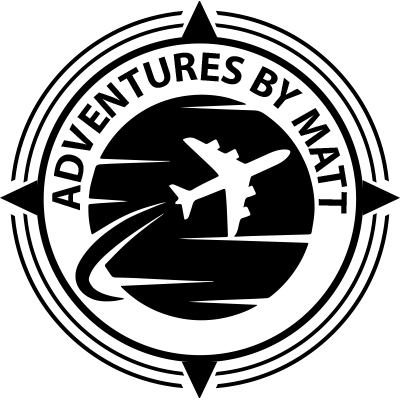Discover the Sundance Film Festival with our guide, covering top performances and practical tips—experience music in a unique, natural setting.
Have you ever wondered where some of your favorite independent films got their start? Imagine a place where emerging filmmakers showcase their creative visions alongside established industry names, all against the backdrop of snowy mountains and the buzz of artistic energy. Welcome to the Sundance Film Festival!
Every year, Park City, Utah, transforms into a hub of cinematic excitement as filmmakers, actors, and enthusiasts from around the world gather for this event. From gripping dramas to thought-provoking documentaries and experimental films, Sundance offers a lineup that pushes the boundaries of filmmaking. It’s not just about watching movies; it’s about experiencing the passion and dedication of filmmakers.
Come along into the world of Sundance, exploring its history, impact on the film industry, and the films and talents it has launched over the years.
History of the Sundance Film Festival
The Sundance Film Festival, established by actor and director Robert Redford in 1978, has its roots in the town of Park City, Utah. Initially known as the Utah/US Film Festival, it was conceived as a platform to showcase American independent films that often struggled to find recognition in mainstream cinema. Robert Redford aimed to create a space where these voices could be heard and appreciated.
In its early years, the festival was held primarily in Salt Lake City and showcased a modest selection of films. However, as its reputation grew, the festival moved to Park City in 1981 and underwent a huge expansion. Renamed the Sundance Film Festival in 1991, it continued to attract more filmmakers, industry professionals, and film enthusiasts from around the world.
The festival has played a big role in shaping the independent film scene. It has not only provided a launching pad for many acclaimed directors and actors but also served as a barometer for emerging trends and storytelling techniques in cinema.
Today, Sundance is celebrated for its film screenings, its panel discussions, workshops, and awards that recognize outstanding achievements in independent filmmaking. It remains a beacon of creativity and innovation, continuing Robert Redford’s vision of celebrating independent voices in cinema.
Festival Highlights & Experiences
The festival plays a crucial role in promoting independent cinema by providing a platform for voices and storytelling. It champions filmmakers who push boundaries, tackle important societal issues, and explore narratives that might not find a place in mainstream Hollywood. Some of the best highlights of the festival include:
Film Premieres: Sundance premieres independent films across various categories, ranging from compelling dramas and thought-provoking documentaries to innovative experimental works.
Panels and Discussions: The festival hosts insightful panels, workshops, and discussions where filmmakers, industry professionals, and audiences engage in dialogue about filmmaking trends, social issues, and the future of independent cinema.
Awards Ceremony: One of the festival’s most anticipated events is the awards ceremony, where outstanding films and filmmakers are recognized with prestigious accolades, such as the Grand Jury Prize and Audience Awards.
Categories and Competitions
The Sundance Film Festival features several distinct categories that highlight a wide range of films and styles. These categories include:
U.S. Dramatic Competition: Showcases American narrative films that often explore contemporary social issues and personal stories.
U.S. Documentary Competition: Focuses on American non-fiction films that tackle real-world subjects, ranging from politics and social justice to environmental issues.
World Cinema Dramatic Competition: Highlights international narrative films from around the globe, providing a platform for diverse cultural perspectives.
NEXT: Emphasizes innovative and boundary-pushing storytelling, often showcasing emerging filmmakers and experimental approaches.
The competition structure at Sundance involves rigorous screening and judging processes. A panel of professionals, filmmakers, and critics evaluate each film based on criteria such as storytelling, direction, performance, and relevance to contemporary issues. Films compete for awards that recognize excellence in various categories, including Grand Jury
Prizes for both U.S. Dramatic and Documentary films, Audience Awards, and Special Jury Prizes.
Practical Tips
If you find this festival intriguing and are planning to attend, here are some practical tips to help you make the most of your experience:
Ticketing and Pass Options: Purchase your tickets and passes early, as they can sell out quickly. Consider different pass options, such as day passes or full festival passes, to access screenings, panels, and events.
Accommodation and Travel Tips for Park City, Utah: Book your accommodation well in advance, as lodging options in Park City can fill up fast during the festival. If accommodations are limited, consider staying in nearby towns and commuting to Park City.
Navigating the Festival: Study the festival schedule in advance and prioritize the screenings and events you want to attend. Arrive early for popular screenings to secure a seat. Be prepared for long lines and unpredictable weather, so dress warmly and wear comfortable shoes. Take advantage of the festival’s mobile app for updates, schedules, and last-minute changes.
Making the Most of the Experience: Engage with filmmakers and attendees during Q&A sessions and networking events. Attend panels and discussions to gain insights into the industry and filmmaking process. Pace yourself throughout the festival to avoid burnout and take breaks to explore Park City.
Impact on the Film Industry
The Sundance Film Festival has had a profound impact on the film industry, serving as a launchpad for numerous successful careers and influencing trends in cinema worldwide. Here’s how Sundance has shaped the film industry:
Shaping Careers and Trends: Sundance is renowned for discovering and promoting emerging talent, often championing independent filmmakers who go on to achieve mainstream success. Filmmakers like Quentin Tarantino (“Reservoir Dogs”), Steven Soderbergh (“Sex, Lies, and Videotape”), and Kevin Smith (“Clerks”) gained recognition and launched their careers after premiering their debut films at Sundance.
Examples of Successful Films and Careers: Beyond launching individual careers, Sundance has introduced films that have made significant cultural impacts. Films such as “Little Miss Sunshine,” “Napoleon Dynamite,” and “Beasts of the Southern Wild” started as Sundance darlings before capturing mainstream audiences and earning critical acclaim.
Influence on the Broader Film Landscape: Sundance’s emphasis on independent cinema has reshaped the industry by elevating the importance of storytelling and artistic innovation. The festival’s success in promoting independent voices has encouraged studios and distributors to invest in smaller, riskier projects that might otherwise be overlooked.
In summary, the Sundance Film Festival continues to play a pivotal role in showcasing creativity, launching careers, and influencing the direction of modern cinema. Its impact extends far beyond its Utah setting, shaping the way audiences and industry professionals view and appreciate independent filmmaking.


Leave a Reply